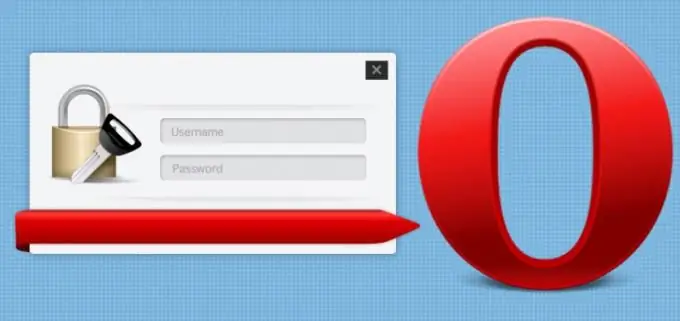Opera has a built-in component called "Password Manager" in recent browser versions. It monitors the user's filling out of forms on web pages and determines the fields that are used in the forms to enter the username and password. When sending data to the server, this component offers to save it so as not to enter it manually each time the same form is filled out. The user has some possibilities to interfere with the work of the "Password Manager", although there are very few settings available.

Necessary
Opera browser
Instructions
Step 1
When you enter your login and password for the first time, you can instruct to save this pair for the viewed page - the browser displays the corresponding invitation at the top of the page when you click the send data button. In the strip that appears, click the "Save" button for the browser to encrypt the entered data and place it in its storage on the computer disk. If the next time on this page you press the key combination Ctrl + Enter, "Password Manager" will enter them in the required form fields for you and click on the button for sending data.
Step 2
In the same strip there is also a button "Never" - use it to turn off the mode of saving passwords. The login-password pairs already recorded on the disk will not be deleted, but the browser will stop asking questions about saving new ones.
Step 3
To reactivate the disabled "Password Manager" use the main browser settings window. To access it, press Ctrl + F12 or select General Settings in the Settings section of the Opera menu. The "Enable password management" setting has been placed on the "Forms" tab - check its checkbox and click the OK button.
Step 4
You have the opportunity to remove one or the required number of saved login-password pairs from the complete list. Access to this list is opened by the "Passwords" button located to the right of the one described in the previous step of the installation - click it and in the search query field enter the name of the domain whose authorization data you want to remove. There may be several passwords for each site in the list, a complete list of them can be opened by clicking on the triangle in front of the domain name. Highlight the required login (passwords are not displayed here for confidentiality) and click the "Delete" button.
Step 5
For a total cleanup of the password storage, use the delete personal data dialog. It is called through the browser menu - open it and select "Delete personal data" in the "Settings" section. You will see a reduced to a minimum version of the dialog, and for a complete list of available settings, click on the "Detailed Settings" label. Check the box next to "Delete saved passwords" and check all other settings so that you don't lose anything important during the cleaning process. Then click the "Delete" button.






